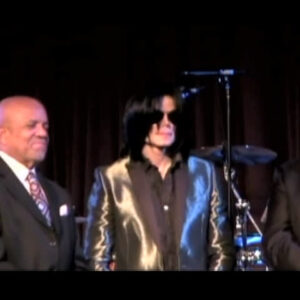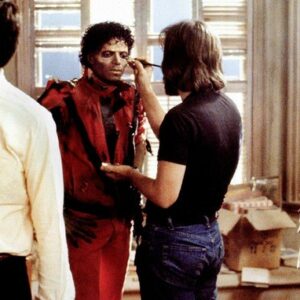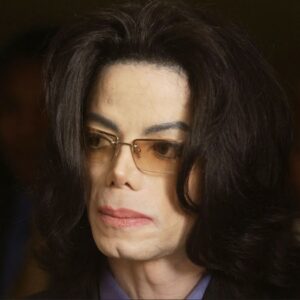Before Bruce Willis emerged as one of Hollywood’s most recognizable faces, his journey to fame was far from an overnight success. Born on March 19, 1955, in Idar-Oberstein, West Germany, Bruce Willis was the son of a U.S. soldier and a German mother. The family moved to Carneys Point, New Jersey, when Bruce was just two years old, after his father was discharged from the military. Willis grew up in a modest, working-class household, far from the glitz of Hollywood, and faced a challenge that could have derailed his dreams early on — a debilitating stutter.
Willis discovered early on that performing had the power to temporarily free him from the chains of his stutter. His interest in acting blossomed during high school when he joined the drama club, finding a new sense of confidence and purpose on stage. After graduating, Willis went on to attend Montclair State University to study drama but dropped out in his junior year to pursue acting full-time in New York City.
During the late 1970s and early 1980s, Willis struggled like so many aspiring actors. He worked various odd jobs, from bartending to private investigating, to support himself while auditioning for roles. At one point, Willis even played harmonica for a blues band, developing a charismatic stage presence that would serve him well later in his acting career. But despite his gritty determination, big breaks were elusive.
He appeared in a handful of off-Broadway plays, like Heaven and Earth and Fool for Love, and picked up minor TV roles, but stardom was still out of reach. His undeniable talent and swagger, however, were beginning to garner attention. By the mid-1980s, Willis was poised for the break that would transform him from an unknown actor to a household name — a role in the TV show Moonlighting.
Role on Moonlighting: Breaking Through with David Addison
When Bruce Willis was cast as David Addison in Moonlighting, he was virtually an unknown in Hollywood. However, the road to landing that part wasn’t simple. Moonlighting, a quirky dramedy that blended romance, humor, and mystery, needed a male lead who could stand toe-to-toe with the already established Cybill Shepherd. Shepherd was a model-turned-actress with notable film credits under her belt, and she was set to play Maddie Hayes, the sophisticated former model who ends up running a private detective agency. The network wanted someone with a bit of fame, a more polished image. But series creator Glenn Gordon Caron had something different in mind.
Willis’ audition left an indelible mark on Caron. There was an electricity, a brashness, and above all, a charisma that was impossible to ignore. Caron took a gamble, advocating for Willis despite initial studio reservations. His decision would prove transformative, not only for Willis but for television as a whole.
Willis’ portrayal of David Addison was a revelation. David was a fast-talking, wise-cracking detective with a mischievous grin, a blue-collar swagger, and a rebellious streak that made him irresistible. Willis infused the character with his natural charm and comic timing, blending humor with emotional depth in a way that felt refreshing for 1980s TV. In a time when most male leads on television were stoic or hyper-masculine, Willis brought vulnerability, making David Addison an unpredictable and deeply human character.
David Addison wasn’t a traditional hero. He was messy, flawed, often irresponsible, and unafraid to make a fool of himself. But in Willis’ hands, he became the heart of Moonlighting — a character viewers rooted for even when they were frustrated by him. The role gave Willis the space to showcase his talents, from dramatic acting to slapstick comedy, all while hinting at the action-hero persona he would soon cultivate in his later films.
The Impact of Moonlighting: Shaking Up 1980s Television
Moonlighting premiered in 1985 on ABC and became an instant sensation, breaking the mold of traditional TV dramas. With its snappy dialogue, clever breaking of the fourth wall, and inventive plots that often paid homage to classic films and genres, the show redefined what television could be. At its core, though, Moonlighting was a romantic dramedy — a story about the push-and-pull relationship between David Addison and Maddie Hayes. Their “will-they-won’t-they” dynamic kept audiences on edge, and the unresolved sexual tension between the characters was palpable.
The show’s success was largely due to the electric chemistry between Bruce Willis and Cybill Shepherd. Willis brought unpredictability, humor, and emotional depth to his role, while Shepherd played the straight-laced Maddie with elegance and sharpness. Their dynamic created a unique energy that made Moonlighting unlike anything else on television. It wasn’t just a show about solving crimes — it was about the characters’ tumultuous relationship, their verbal sparring matches, and the underlying tension that kept viewers coming back for more.
But Moonlighting wasn’t just a hit — it was groundbreaking. It dared to blend genres, something that wasn’t common at the time. One episode might be a hard-boiled detective story, while another might be a screwball comedy or even a Shakespearean parody. The show’s inventive writing, coupled with the brilliant performances by Willis and Shepherd, kept it from being easily categorized. Critics loved it, and it earned multiple Emmy nominations and wins, cementing its place in television history.
Beyond its creative innovations, Moonlighting also helped pave the way for a new kind of television hero — one who could be funny, flawed, and emotionally vulnerable. Willis, as David Addison, became the poster boy for this shift. In many ways, Moonlighting laid the groundwork for future TV characters, from Chandler Bing in Friends to Jim Halpert in The Office — characters who could seamlessly oscillate between comedy and drama.
Bruce Willis’ Chemistry with Cybill Shepherd: The Secret to Moonlighting’s Popularity
The heart of Moonlighting was undeniably the fiery chemistry between Bruce Willis and Cybill Shepherd. Their on-screen rapport was electric, brimming with sexual tension, witty banter, and moments of genuine vulnerability. The magic between David and Maddie transcended the typical “opposites attract” trope, becoming something far more complex and layered.
David Addison, the brash, carefree private eye, constantly challenged Maddie Hayes, the polished, no-nonsense former model turned detective agency owner. Their relationship was as volatile as it was tender, and the show played on that volatility to great effect. Week after week, audiences tuned in to see how their relationship would evolve — or fall apart — as David and Maddie navigated crime-solving and their own growing feelings for each other.
Off-screen, however, rumors swirled about tension between Willis and Shepherd. Their clashing personalities reportedly created friction behind the scenes. Yet, paradoxically, this off-screen tension only added to the intensity of their on-screen dynamic. Whether they were shouting at each other in frustration or sharing a quiet, intimate moment, the push and pull between Willis and Shepherd kept the audience invested. Their undeniable chemistry became a cornerstone of Moonlighting’s success.
As Moonlighting progressed, the inevitable happened — David and Maddie’s relationship reached a boiling point. In the show’s third season, they finally gave in to their romantic feelings, but consummating the relationship arguably changed the dynamic of the show. Some fans and critics felt that the magic was lost once the tension was resolved, leading to what became known as the “Moonlighting Curse” — the idea that once the central couple gets together, the show starts to decline.
Regardless, the first few seasons of Moonlighting remain some of the most iconic in television history, and the sizzling chemistry between Willis and Shepherd played an undeniable role in that legacy.
Transition to Film Stardom: From TV Hero to Hollywood Action Icon
As Moonlighting continued to skyrocket in popularity, Hollywood took notice of Bruce Willis. By 1988, Willis had landed his first major film role, and it wasn’t just any part — it was the lead in a movie that would redefine the action genre: Die Hard.
At the time, casting Willis as the action hero John McClane was a bold move. Action stars in the 1980s were typically muscle-bound, larger-than-life figures like Arnold Schwarzenegger and Sylvester Stallone. Willis, with his wiry frame and everyman appeal, didn’t fit that mold. But that was exactly why he worked so well as McClane. Willis brought the same vulnerability, humor, and relatability to McClane that he had mastered as David Addison, and it resonated with audiences.
Die Hard was a massive success, and Willis’ star power shot into the stratosphere. No longer just the funny, wise-cracking guy from TV, Willis had transformed into a full-fledged movie star. Over the next few years, Willis capitalized on his newfound fame with roles in films like Look Who’s Talking (1989), Pulp Fiction (1994), and 12 Monkeys (1995), further proving his versatility as an actor.
Yet, despite his success on the big screen, Willis never fully left behind his comedic roots. His ability to blend humor with action and drama became his signature, making him one of the most beloved and enduring stars in Hollywood.
Conclusion: The Legacy of Bruce Willis
Bruce Willis’ rise to fame is a testament to talent, perseverance, and perfect timing. His breakthrough role in Moonlighting catapulted him to television stardom, but it was his transition to film that solidified his place as a Hollywood icon. Throughout his career, Willis has remained a dynamic and versatile performer, able to balance comedy, drama, and action in a way few actors can.
From his early days struggling in New York to becoming one of the most recognizable faces in entertainment, Bruce Willis’ journey is a true Hollywood success story. As both David Addison and John McClane, he captured the hearts of audiences and forever changed the landscape of television and film. His legacy continues to inspire actors and entertainers today, proving that sometimes, the best heroes are the ones who can laugh at themselves.





